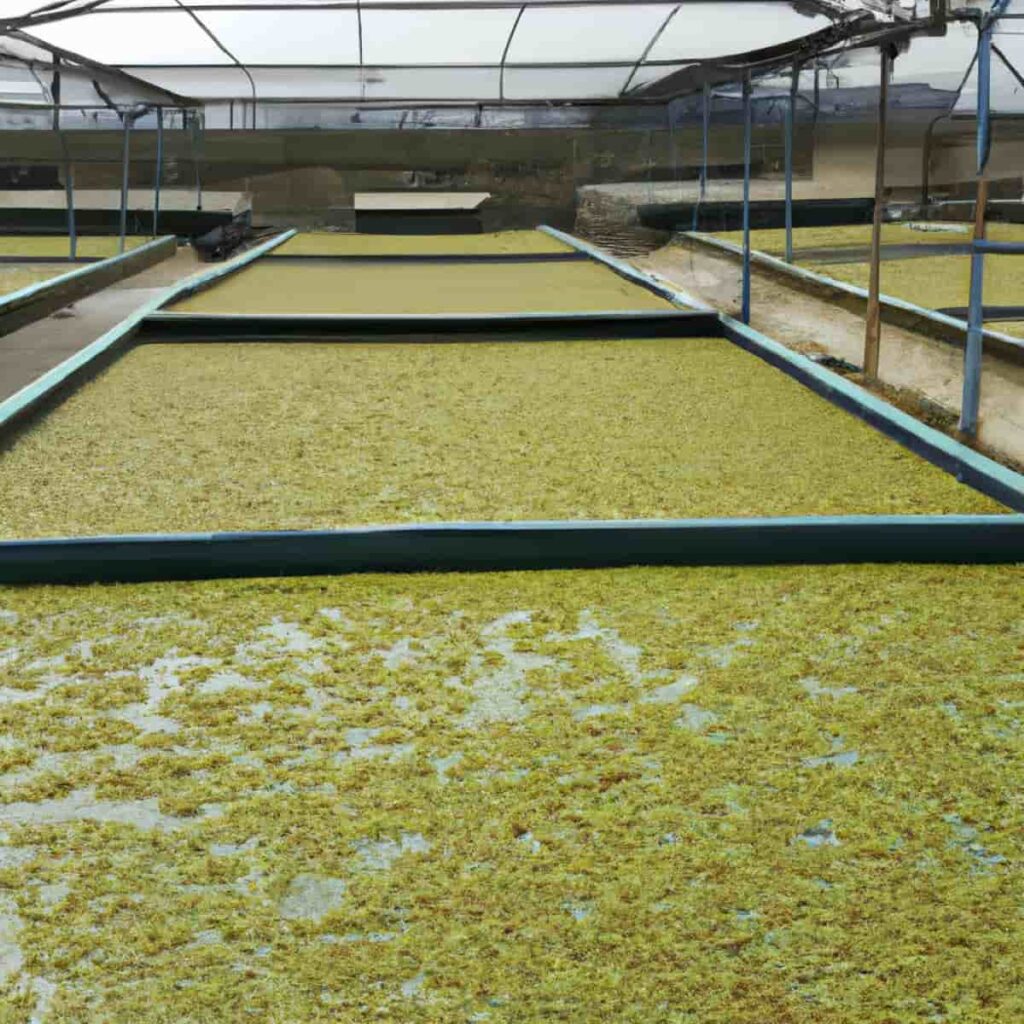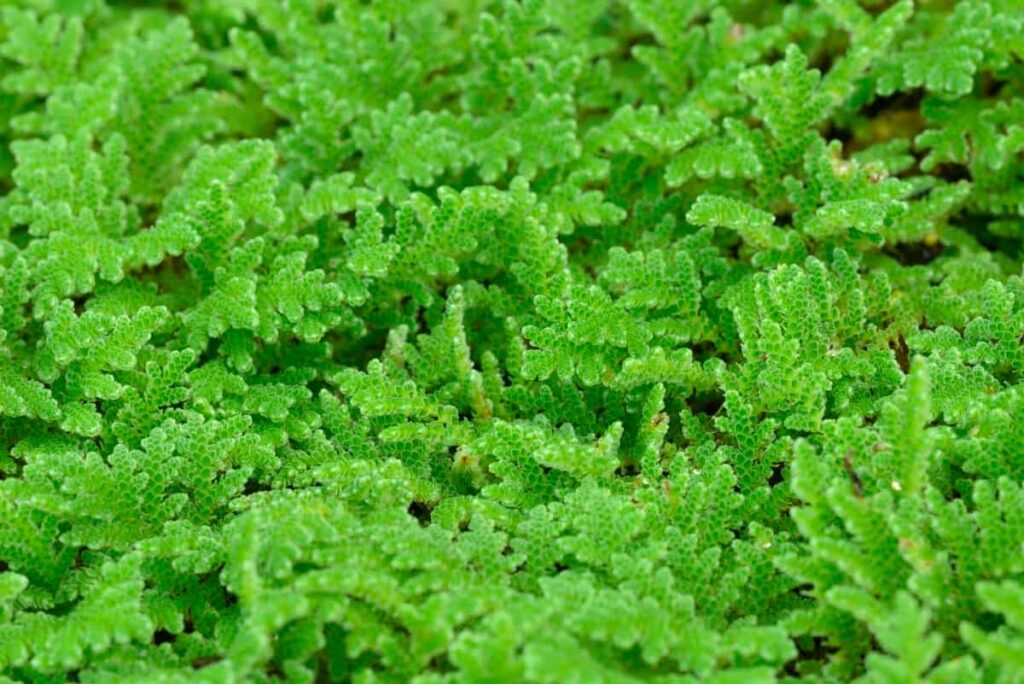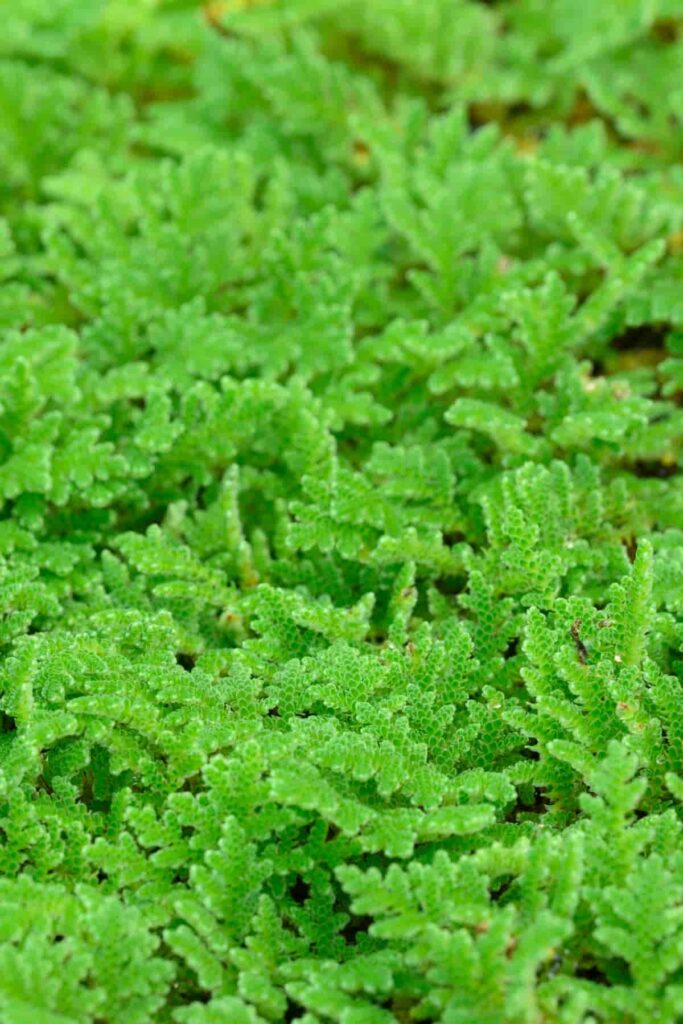Welcome to the comprehensive guide on the Azolla cultivation business plan! This step-by-step manual will walk you through growing and caring for Azolla, highlighting its numerous benefits. Azolla, a small aquatic fern, is a sustainable and profitable business venture with tremendous potential. You can tap into various industries like livestock feed, biofertilizer, wastewater treatment, and more by harnessing its rapid growth and unique properties. Our user-friendly approach provides accurate data and practical tips to help you succeed.

Azolla Cultivation Business Plan
What is Azolla Cultivation?
Azolla cultivation involves growing a unique genus of aquatic ferns, known by various names such as mosquito, duckweed, fairy moss, and water ferns. Unlike typical ferns, Azolla species have a specialized and highly reduced form, resembling duckweed or mosses rather than traditional ferns.
One notable species, Azolla filiculoides, even has a published reference genome. Interestingly, during the Eocene period, Azolla grew abundantly and absorbed significant carbon, contributing to a global cooling event that persists today. Azolla can be considered an invasive plant in wetlands, freshwater lakes, and ditches. Its presence in these ecosystems can substantially alter biodiversity and the overall functioning of aquatic environments.
Step-By-Step Guide on Growing Azolla in Ponds
- Determine the size of the pond based on the desired quantity of Azolla to be harvested. A pond with dimensions of approximately 2m in length and 1m in width is suitable for small-scale cultivation. Level the ground and lay bricks to create the pond structure.
- Place old plastic sacks or sheets at the bottom of the pond to provide a barrier.
- Cover the entire pond with durable plastic sheets of 150 gauge thickness.
- Secure the sides of the plastic sheets by placing bricks on the side walls to keep them in place.
- Spread around 25 kg of clean, fertile soil evenly across the pond’s surface.
- Apply a mixture of 5 kg of cow dung and 30g of rajphos or musoorie phos uniformly over the soil.
- Maintain the water depth in the pond at approximately 10 cm.
- Calculate that 500g of Azolla culture is required per square meter of the pond.
- Within 1-2 weeks, the Azolla will fully cover the pond, indicating it is ready for harvesting.
Best Practices for Cultivating Azolla as a Livestock Feed
The Natural Resources Development Project (NARDEP) in India developed a cultivation technique that is simple and affordable for livestock farmers. Here’s a summary of the NARDEP method:
- Creating a water body: Dig a 2 x 2 x 0.2 m pit and cover it with plastic gunnies to protect the silpauline sheet from tree roots. Spread 10-15 kg of sieved fertile soil uniformly over the sheet.
- Applying slurry: Pour a slurry made of 2 kg cow dung, 30 g Super Phosphate, and 10 liters of water onto the sheet. Add more water to raise the level to about 10 cm.
- Introducing Azolla: Place 0.5-1 kg of fresh and pure Azolla culture in the water. It will grow rapidly and fill the pit within 10-15 days, allowing daily harvests of 500-600 g.
- Nutrient management: Add a mixture of 20 g Super Phosphate and 1 kg cow dung every five days to promote Azolla multiplication. The weekly addition of a micronutrient mix can enhance the mineral content.
Key Considerations
- Removing excess biomass regularly to prevent overcrowding.
- Maintaining a temperature below 25°C with shade if needed.
- Testing and maintaining a pH between 5.5 and 7.
- Replacing bed soil and water periodically to prevent nitrogen buildup.
- Cleaning the bed every six months.
- Washing Azolla in freshwater before use.
Organic Methods to Promote Azolla Growth in Water Bodies
- Nutrient-rich water: Maintain water with high nutrient levels, especially nitrogen, and phosphorus, to support Azolla growth.
- Vermicompost application: Apply vermicompost to enhance soil fertility and nutrient content, indirectly benefiting Azolla growth.
- Organic fertilizers: Use organic fertilizers such as cow dung or poultry manure to provide essential nutrients to the water body.
- Green manure crops: Grow nitrogen-fixing plants like legumes around the water body. When incorporated into the water, they release nitrogen, supporting Azolla growth.
- Compost tea: Apply compost tea, a liquid fertilizer made from compost, to enrich the water with nutrients and promote Azolla growth.
- Mulching: Use organic mulch materials, such as dried leaves or straw, around the water body to prevent nutrient loss and maintain moisture.
- Avoid chemical pollutants: Minimize or eliminate chemical fertilizers, herbicides, and pesticides, as they can negatively impact Azolla growth.
In case you missed it: Optimizing Avocado Orchard Management: A Month-by-Month Maintenance Guide for Maximum Yield

Optimal Conditions for Azolla Cultivation: Temperature, Light, and pH
Water Acidity (pH)
- Azolla can survive within a pH range of 3.5 to 10.
- It cannot grow in highly acidic soils with a pH below 3.5.
- The preferred pH range for the IRRI2 medium is between 5.5 and 6.5.
Temperature
- Azolla exhibits tolerance to a wide range of temperatures.
- Some azolla species can survive in temperatures as low as -5°C.
- Growth is typically reduced above 35°C, and prolonged exposure to temperatures above 45°C is not survivable.
- Most species thrive within temperatures between 18°C and 28°C, but certain species like A. pinnata, A. mexicana, and A. caroliniana can tolerate temperatures as high as 30°C.
Light
- Light is crucial in photosynthesis and nitrogenase activity regulation in Azolla and its symbiotic partner, Anabaena.
- Azolla species prefer less than full sunlight, except in high latitudes during spring.
Tips and Techniques to Increasing Azolla Production
- Nutrient supplementation: Apply 1 kg of cow dung and 10-20g of rajphos (rock phosphate) once every two weeks to provide essential nutrients for Azolla growth.
- Water replacement: Remove one-fourth of the water from the pond and refill it with new fresh water once every two weeks. This helps maintain water quality and prevent the buildup of excess nutrients.
- Soil renewal: Remove the existing soil from the pond and add 5 kg of fresh soil periodically. This ensures a nutrient-rich environment for Azolla growth.
- Pond cleaning and restarting: Every six months, empty the pond and restart Azolla cultivation with new culture and soil. This helps prevent any contamination or pest/disease buildup.
In case you missed it: Mastering the Dragon Fruit Orchard Management: A Month-by-Month Operations Guide for Maximum Yield

Azolla Farming for Sustainable Agriculture: Benefits and Techniques
Azolla farming business for sustainable agriculture offers numerous benefits and techniques. Azolla is a water fern that can serve as a feedstock due to its high protein, fatty acid, amino acid, and vitamin content. It provides an alternative to soybeans and maize, commonly used protein sources that face issues such as increased import costs. Azolla has been shown to improve animal growth rates when included in their diet. It contains various active compounds like phenolic content, caffeoylquinic acid derivatives, tannins, and carotene.
With continuous harvesting, azolla cultivation requires soil, water, and a pond to maintain optimal conditions. It offers a lower-cost protein supply, doesn’t compete with human food sources, and requires less land. Additionally, azolla cultivation has been found to have minimal environmental impacts, including low greenhouse gas emissions and reduced carbon footprint. Further studies on labor cost minimization, life cycle analysis, and optimization techniques are recommended to enhance azolla farming for sustainable agriculture.
Enhancing Azolla Growth with Natural Fertilizers and Supplements
Enhancing Azolla growth with natural fertilizers and supplements offers numerous benefits. Azolla is an excellent nutrient feed for livestock due to its high protein, amino acid, vitamin, and mineral content. It is easily digestible for animals due to its low lignin content. Feeding Azolla to poultry birds has been observed to improve broiler chicken weight and increase egg production in layers.
In case you missed it: Optimizing Indian Jujube/Ber Orchard Management: A Month-By-Month Operations Guide for Maximum Yield

Azolla supplementation has increased animal milk yield by 15-20% when combined with regular feed. It can also feed sheep, goats, pigs, rabbits, and fish. Also, Azolla is a biofertilizer that fixes atmospheric nitrogen and stores it in its leaves, making it a valuable green manure. Cultivating Azolla in paddy farms has increased rice production by 20% and is an effective weed control method. The thick layer of Azolla on the water surface acts as organic mulching, preventing weed growth and maintaining soil moisture by reducing water evaporation.
Management of Pests and Diseases in Azolla Ponds: Prevention and Remedies
Managing pests and diseases in azolla ponds is crucial for maintaining healthy growth. Azolla can be susceptible to pest attacks like insects or fungal diseases, especially in hot and humid conditions. Snails are a common pest found in azolla plants grown in rice fields. When it comes to using pesticides, it’s important to note that pesticides have varying effects on azolla.
For example, molinate has been observed to reduce the growth and nitrogenase activity of A. pinnata, but it increases its chlorophyll content. On the other hand, carbofuran significantly increases chlorophyll content and nitrogenase activity without affecting its growth (Ismail et al., 1995). Careful observations should be given to the choice and application of pesticides to minimize any negative impact on azolla growth and overall pond health.
Effective Strategies for Harvesting and Storing Azolla Biomass
Harvesting azolla can typically be done within 2-3 weeks of growth. Plastic sieves are commonly used for this purpose. A pond of standard dimensions can yield an average of 1kg of azolla daily. Once harvested, azolla can be fed directly to livestock such as cattle, sheep, goats, and poultry. It can also be mixed with additional nutrients before feeding. Alternatively, azolla can be dried and used in its dry form.
Before feeding, cleaning the azolla leaves with fresh water is important to remove any impurities. Proper storage techniques are crucial to maintaining the quality of harvested azolla. Storing azolla in a cool and dry place, away from direct sunlight, is recommended. Adequate ventilation should be provided to prevent moisture buildup, which can lead to deterioration. Additionally, regularly monitoring the stored azolla is necessary to identify any spoilage or pest infestation signs.
Using Azolla as a Biofertilizer: Application Methods and Benefits
- Azolla can be directly incorporated into the soil as green manure.
- It can be mixed with compost or organic matter and applied to the soil.
- Azolla can be used as a mulch layer around the base of plants.
- Nitrogen fixation: Azolla can fix atmospheric nitrogen into a usable form for plants, thus enriching the soil with nitrogen.
- Increased nutrient availability: Azolla releases organic compounds during decomposition, improving nutrient availability in the soil.
- Weed suppression: Azolla forms a dense mat, preventing weed growth and acting as a natural weed suppressant.
- Improved soil structure: Azolla enhances soil structure, water-holding capacity, and aeration.
- Sustainable and environmentally friendly: Azolla is a natural and renewable source of nutrients, reducing the need for synthetic fertilizers and minimizing environmental pollution.
In case you missed it: Optimizing Fig/Anjeer Orchard Management: A Month-by-Month Operation Guide for Maximum Yield

Exploring the Symbiotic Relationship Between Azolla and Nitrogen-fixing Bacteria
Azolla has a unique symbiotic relationship with nitrogen-fixing bacteria called Anabaena azollae. These bacteria reside within special cavities on Azolla’s leaves, converting atmospheric nitrogen into a form the plant can use. This collaboration enables Azolla to thrive in nitrogen-deficient environments and provides a natural nitrogen source for plant growth.
Integrating Azolla Cultivation Into Aquaponics Systems: Advantages and Considerations
Integrating Azolla cultivation into aquaponics systems offers several advantages. Azolla acts as a natural biofilter, helping to remove excess/ pollutants and nutrients from the water and maintain water quality. It provides additional food for fish, acting as a supplemental feed source. Azolla’s fast growth rate and nutrient-rich composition make it an excellent addition to aquaponics systems. Care should be taken to prevent Azolla from overshadowing other plants and blocking sunlight.
Azolla Farming for Wastewater Treatment and Nutrient Recovery
Azolla farming business can be used for wastewater treatment and nutrient recovery. Azolla efficiently absorbs and assimilates nutrients like nitrogen and phosphorus from wastewater, reducing their concentration. It acts as a natural water purifier, improving water quality and reducing pollution.
Azolla’s rapid growth rate allows for quick nutrient uptake. The harvested Azolla biomass can be a valuable organic fertilizer or animal feed source. This sustainable approach provides an eco-friendly solution for wastewater treatment while simultaneously recovering valuable nutrients for agricultural purposes.
Promoting Azolla Growth in Small-scale Systems: Tips for Home Gardeners
- Provide ample sunlight: Azolla thrives in full sunlight, so ensure it receives at least 4-6 hours of direct sunlight each day.
- Maintain water temperature: Azolla prefers water temperatures between 20-30°C (68-86°F). Keep the water warm, especially during cooler months.
- Control water pH: Azolla prefers slightly acidic to neutral pH levels between 6.5-7.5. Test the water regularly and make adjustments if needed.
- Nutrient supplementation: Azolla benefits from additional nutrients. Consider adding organic fertilizers or compost tea to enhance its growth.
- Regular harvesting: Harvest Azolla regularly to prevent overcrowding and promote new growth.
In case you missed it: Optimizing Papaya Orchard Management: A Month-by-Month Operations Guide for Maximum Yield

Commercial Potential of Azolla Cultivation: Market Analysis and Opportunities
- Growing demand: The increasing demand for organic and sustainable agricultural practices has created a favorable market for Azolla. Its natural fertilizing properties and ability to fix atmospheric nitrogen make it an attractive option for farmers.
- Livestock feed: Azolla is rich in protein, vitamins, and minerals, making it a nutritious feed for livestock. The rising demand for high-quality animal feed presents a lucrative market opportunity for Azolla cultivation.
- Biofertilizer production: Azolla’s ability to fix nitrogen makes it an excellent biofertilizer. The demand for organic fertilizers is rising, offering a potential market for Azolla-based biofertilizers.
- Wastewater treatment: Azolla is effective in wastewater treatment due to its capacity to absorb nutrients and pollutants. This opens up opportunities for Azolla cultivation in wastewater treatment plants and eco-friendly water management systems.
- Sustainable agriculture: With its ability to improve soil fertility and reduce the use of synthetic fertilizers, Azolla aligns with sustainable agriculture principles. This positions it well in the growing market for environmentally friendly farming practices.
Conclusion
Azolla cultivation offers a promising business opportunity with its numerous benefits in livestock feed, biofertilizer production, wastewater treatment, and sustainable agriculture. Following a step-by-step guide, entrepreneurs can grow and profit from Azolla cultivation.
- Crops Grown in Summer Season: Best Choices for Summer Gardening
- Organic Pest Control for Tomato Farming
- How to Maximize Sheep Farming Profit
- Broccoli Varieties: Choosing the Right Cultivars for Your Farm
- How to Raise Pigs in Your Own Backyard: A Comprehensive Guide
- Budget Friendly Sheep Shed Ideas: Cheap and Low-Cost Tips
- How Much Do Cattle Farmers Make: Revenue Streams in Cattle Farming
- Management Pests and Diseases in Your Cotton Field
- Sheep Farming Business Plan for Beginners
- Aquaponic Farming at Home: A Step-By-Step Guide
- Profitable Village Farming Business Ideas in 2024
- High-Yield Aquaculture: Fast-Growing Fish for Farming
- Effective Fish Pond Construction Techniques for Beginners
- Irrigation and Water Management in Pineapple Farming
- Blossom to Harvest: Mastering Flowering and Pollination in Papaya Farming
- Pig Fattening Essentials: From Selection to Sale for Beginners
- Raising Wagyu Cattle: A Complete Guide for Premium Beef Production
- Soil Types and Their Water Holding Capacity
- Optimizing Irrigation Schedules for Coconut Groves for Enhanced Yield
- Espresso Your Garden: Coffee Grounds for Healthier Acid-Loving Plants
- The Best Soil Mix for Snake Plants: How to Mix Your Own Snake Plant Soil
- Green Thumb Success: Expert Tips for Cultivating Greenhouse Beans All Year Round
- Bloom All Year Round: The Ultimate Guide to Indoor Hyacinth Care
- Eco-Friendly Gardening: How to Make Liquid Fertilizer from Kitchen Waste
- Ultimate Guide to Grow Anise in Pots: Explore Seed Propagation to Harvesting
- Guide to Raising Chester White Pigs: Discover Breed Facts to Growth Management
- Mastering the Elegance: The Ultimate Guide to Weeping Cherry Tree Care, Planting, and Maintenance
- Ultimate Guide to Planting Garlic in Grow Bags: Growing Strategies for Beginners
- How to Fix Spider Plant Leaf-Related Problems: Natural and Organic Remedies
- 10 Reasons Why Your Tulsi Plant is Shedding Leaves: Home Remedies and Solutions
- Optimizing Growth and Yield: The Advantages of Palm Bunch Ash Fertilizer
- Utilizing Neem Oil Extract as a Natural Pesticide for Hydrangea
- From Soil to Harvest: Various Ways in Which Farmers Can Use AI Tools
- Steps to Encourage and Induce Citrus Flowers: A Comprehensive Guide
- How to Fix Snake Plant Leaf-Related Issues: Natural and Organic Remedies
- Transform Your Garden into a Fragrant Oasis with Raat Ki Rani (Night Blooming Jasmine)
